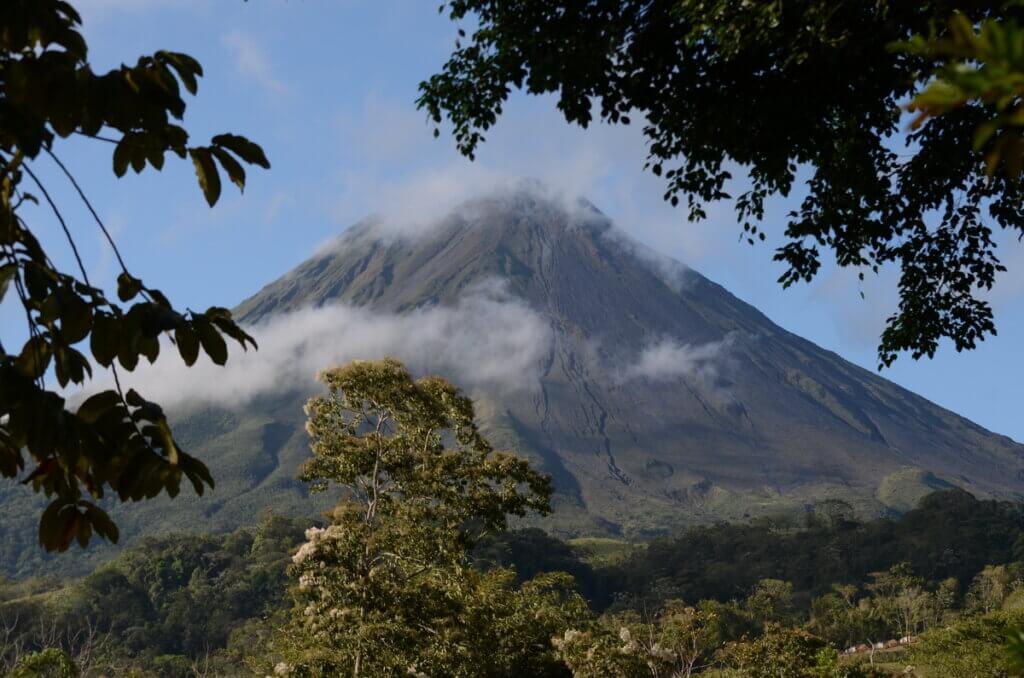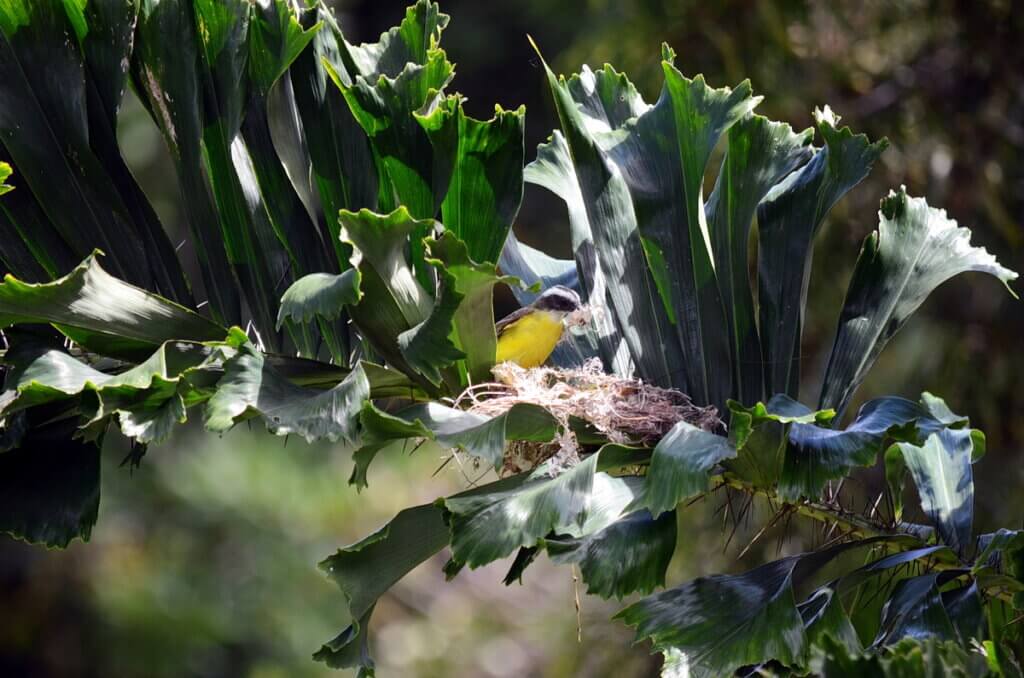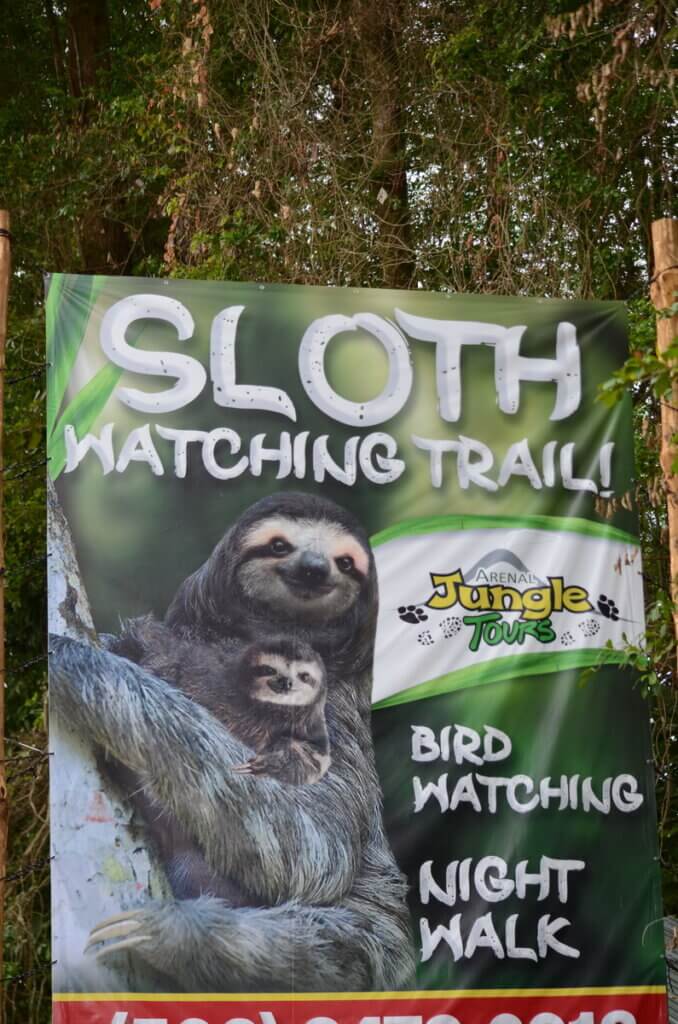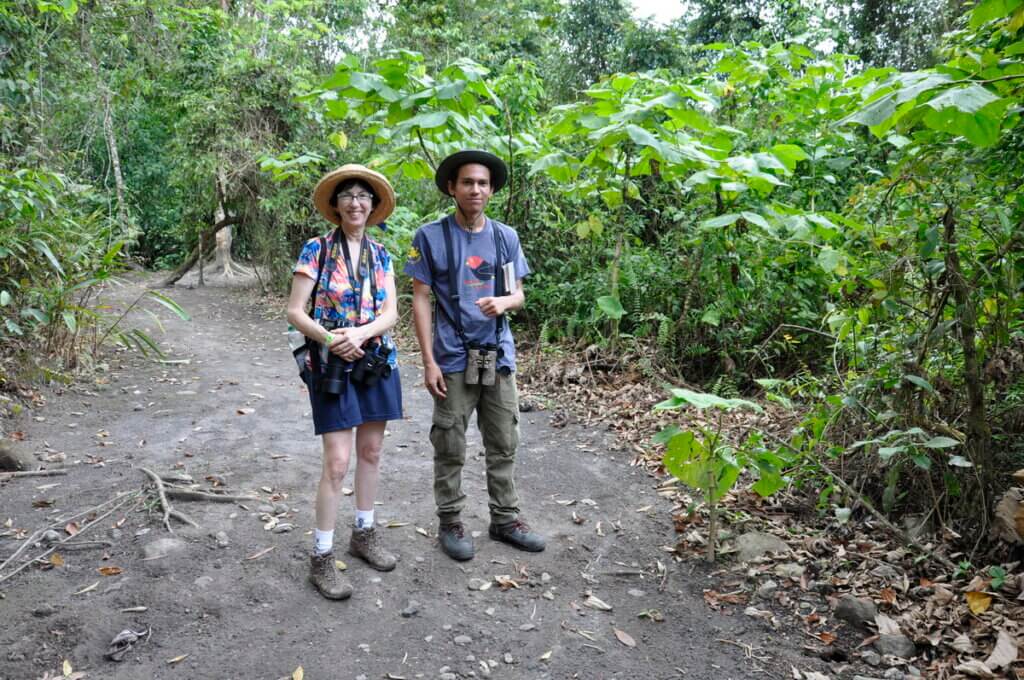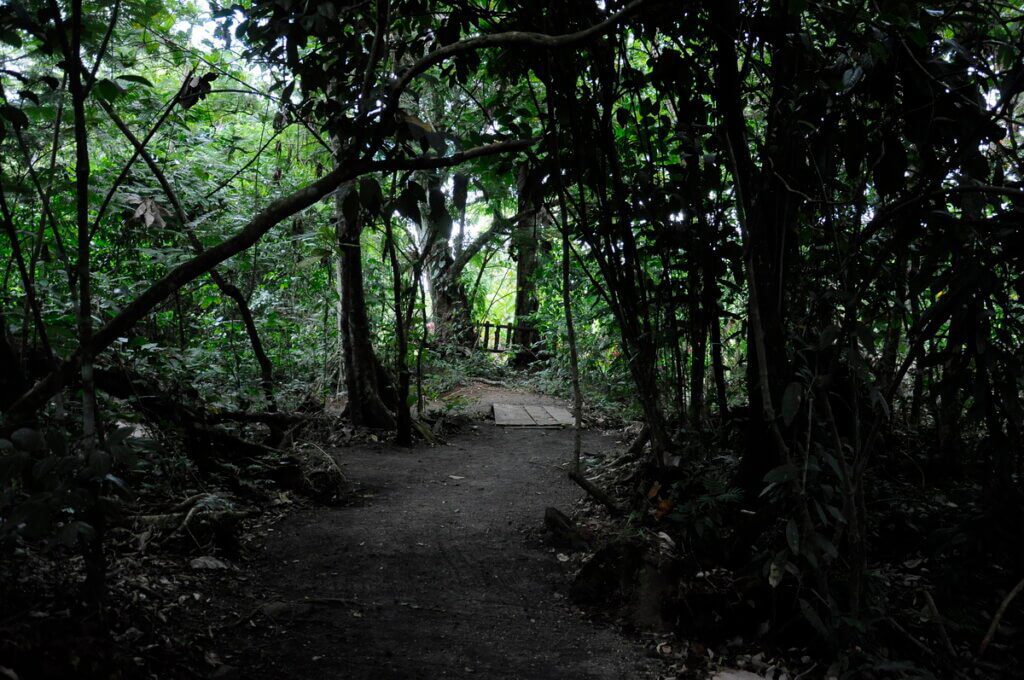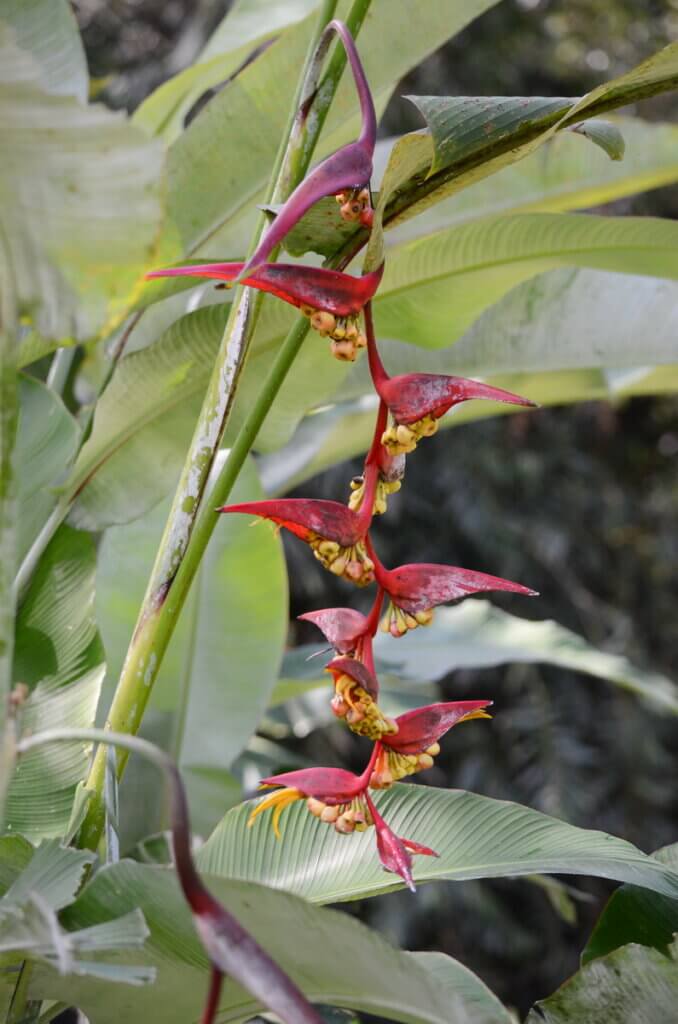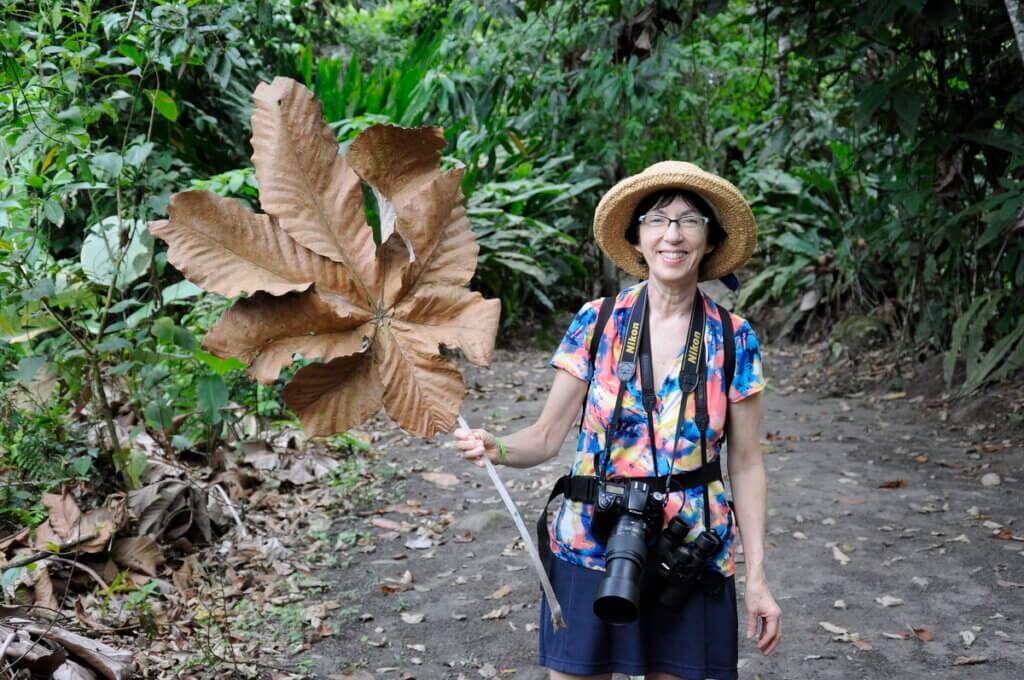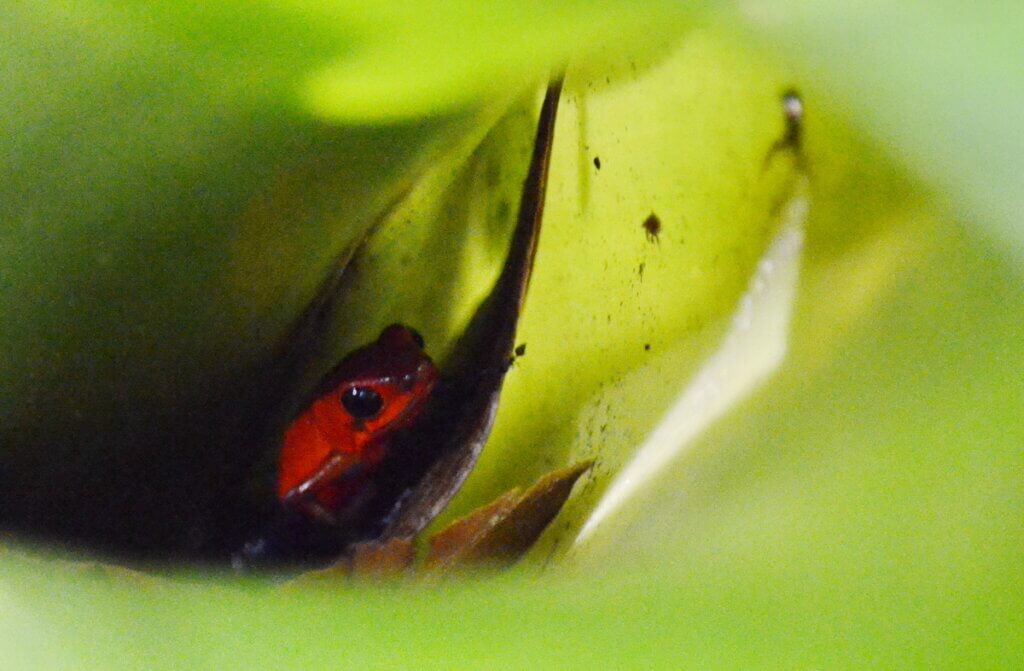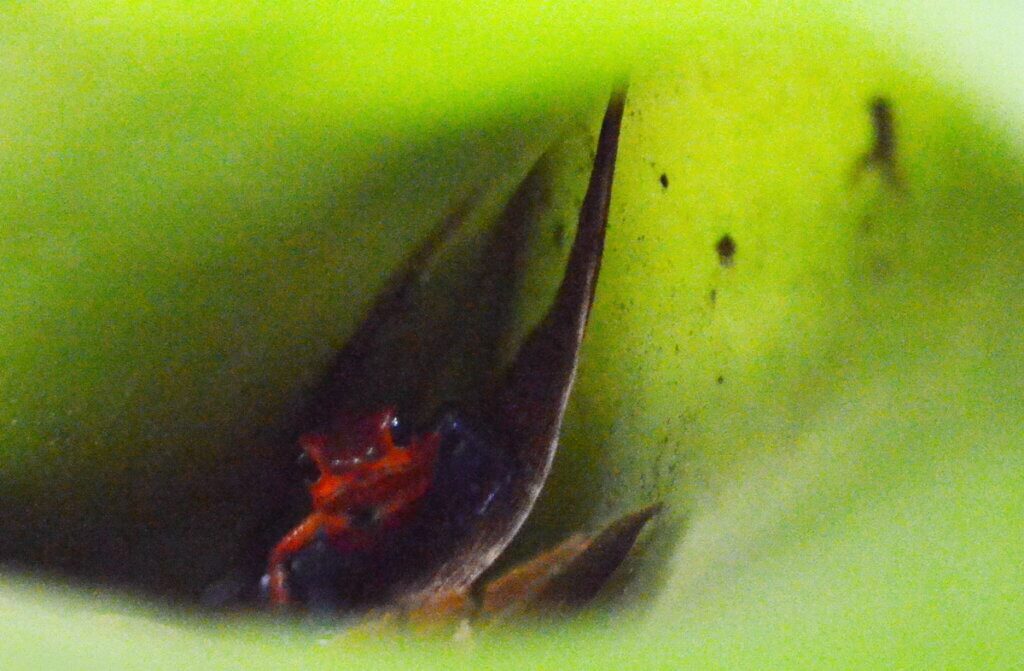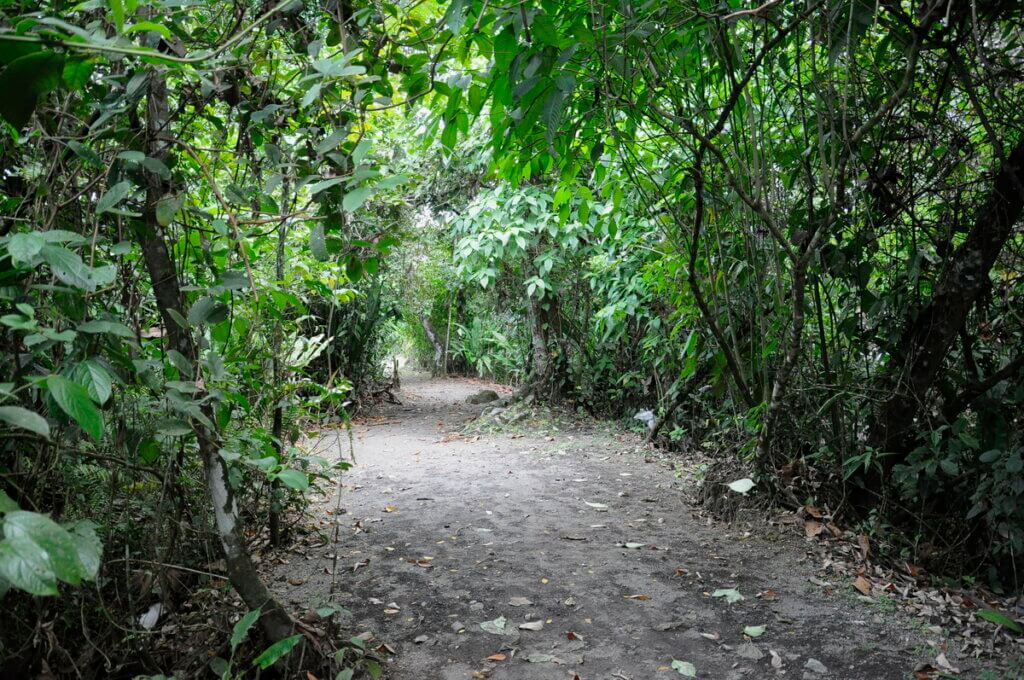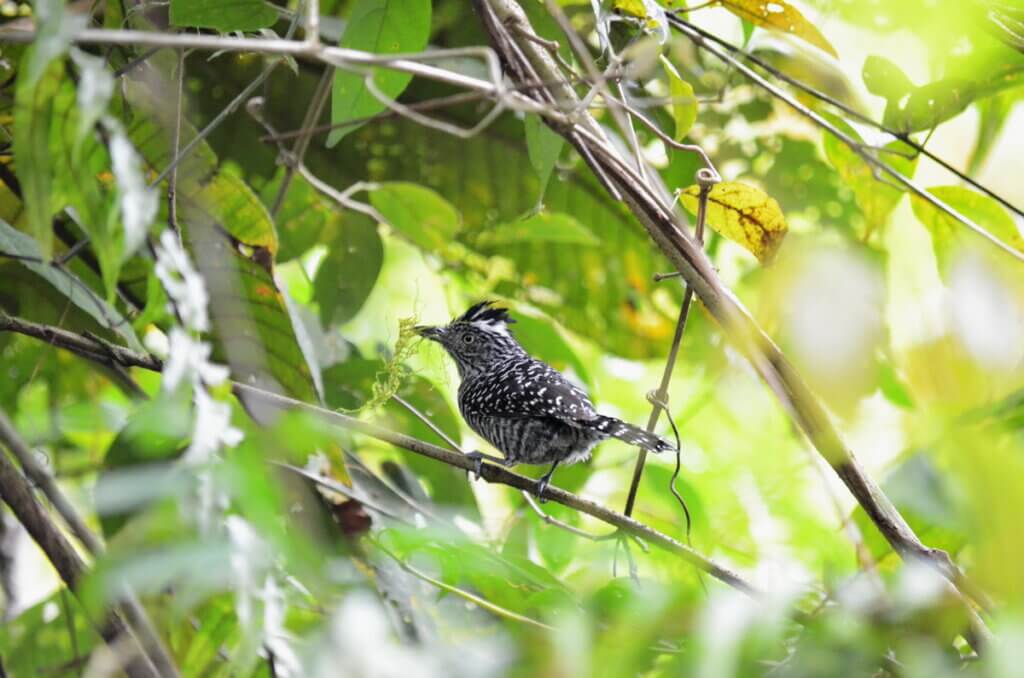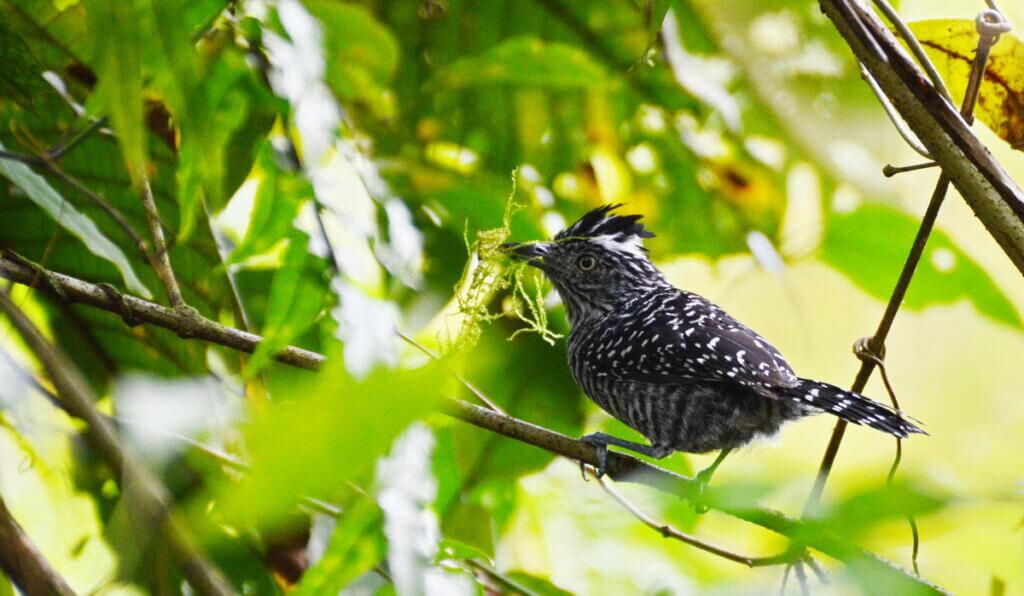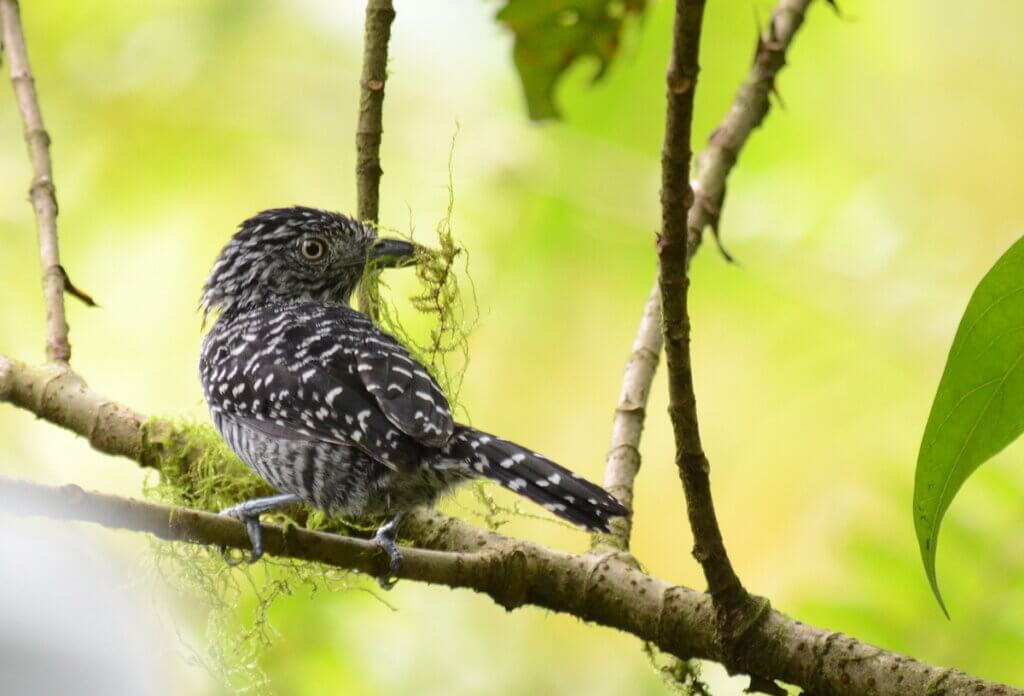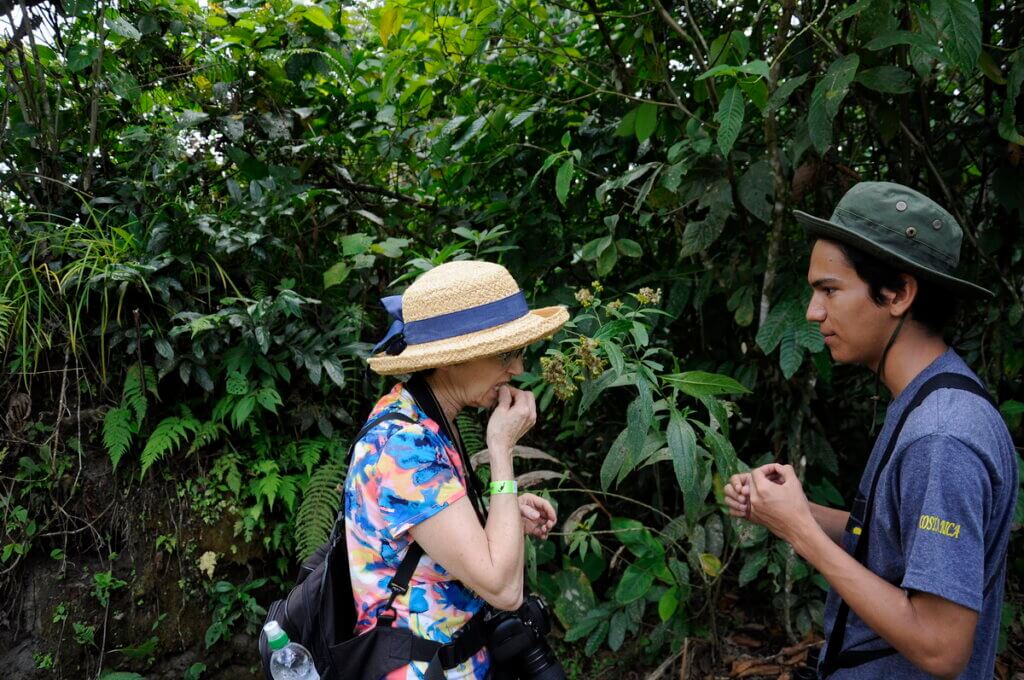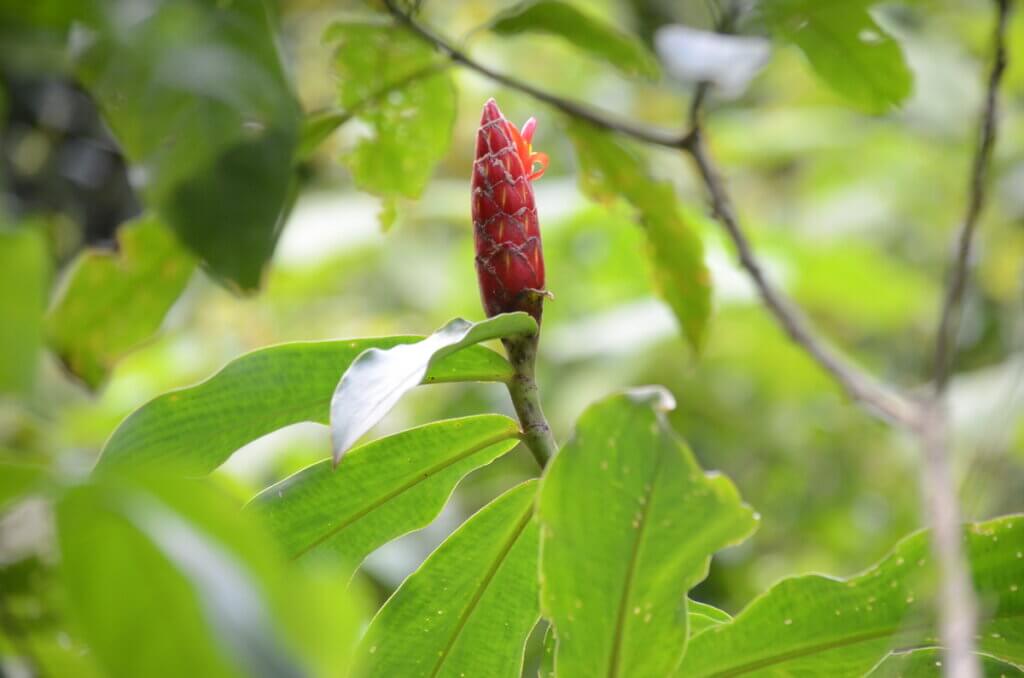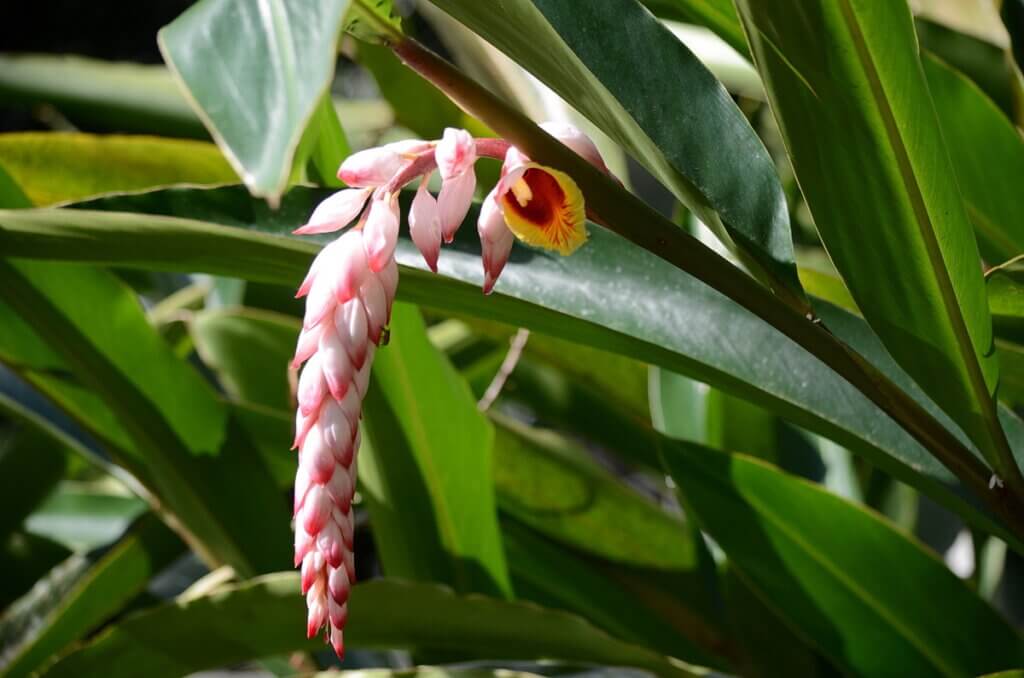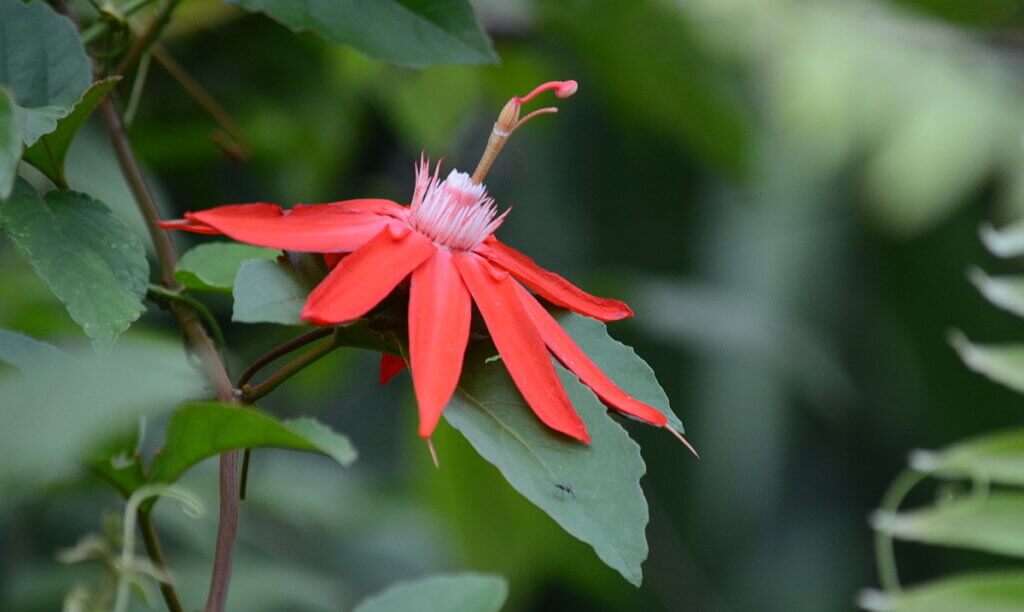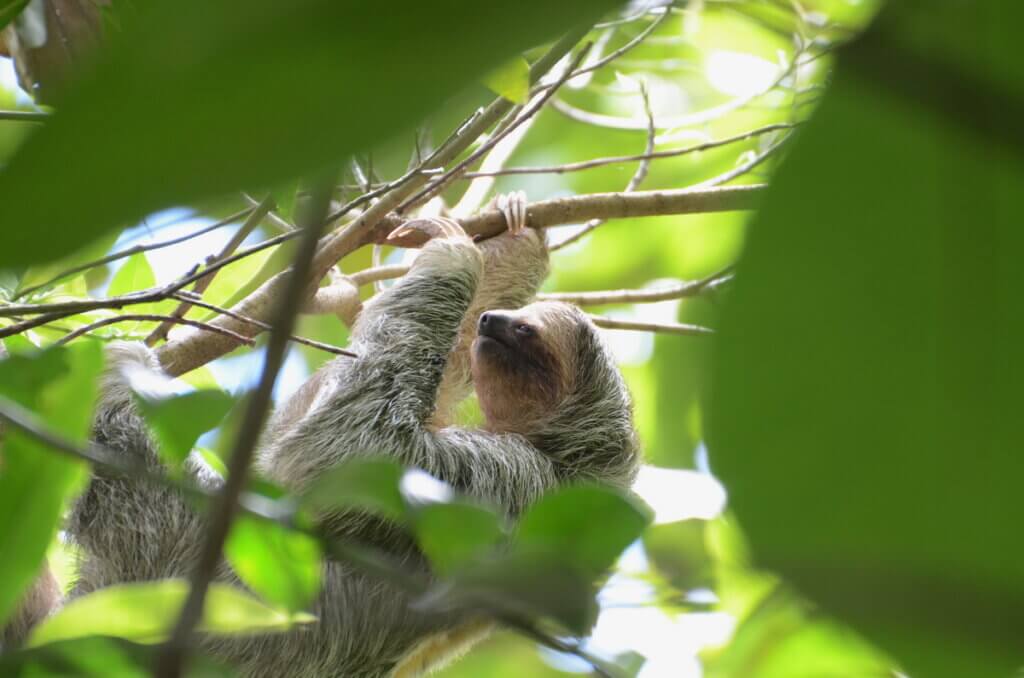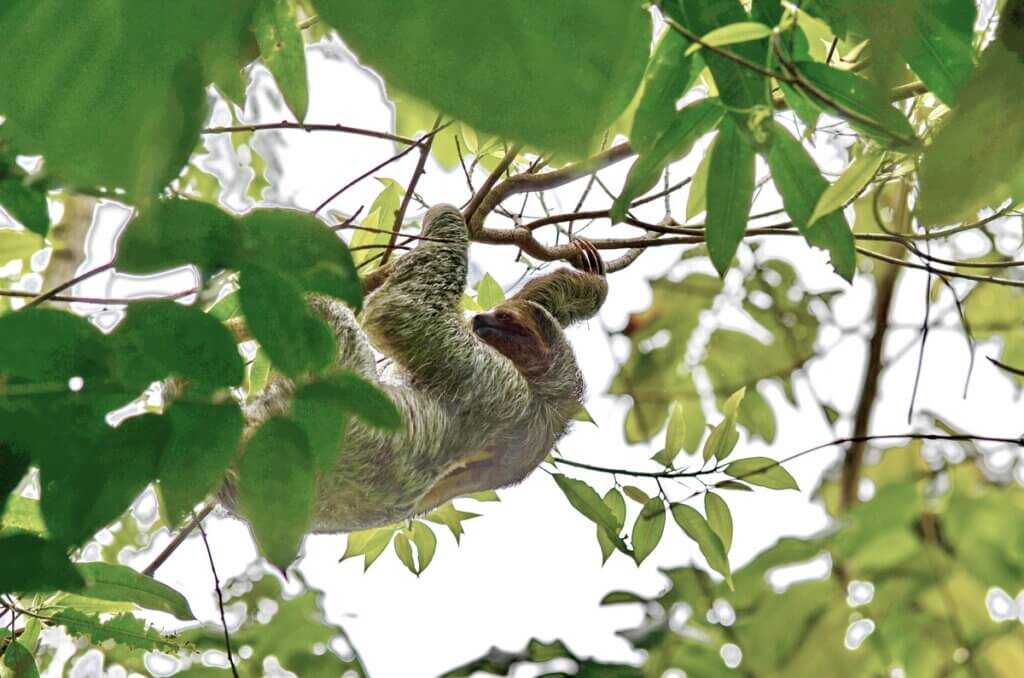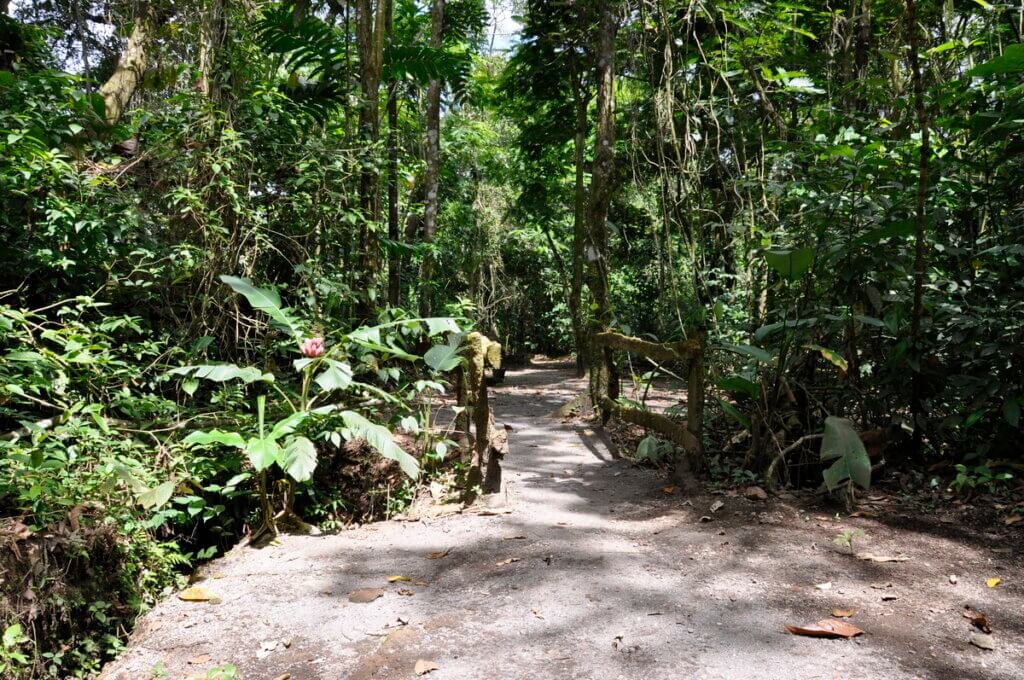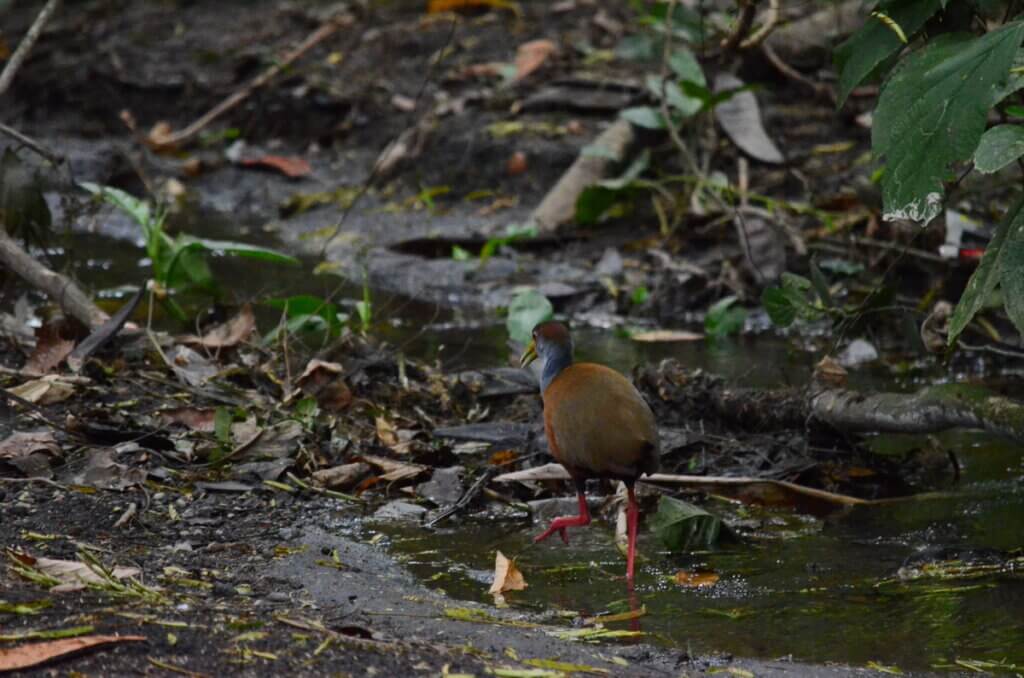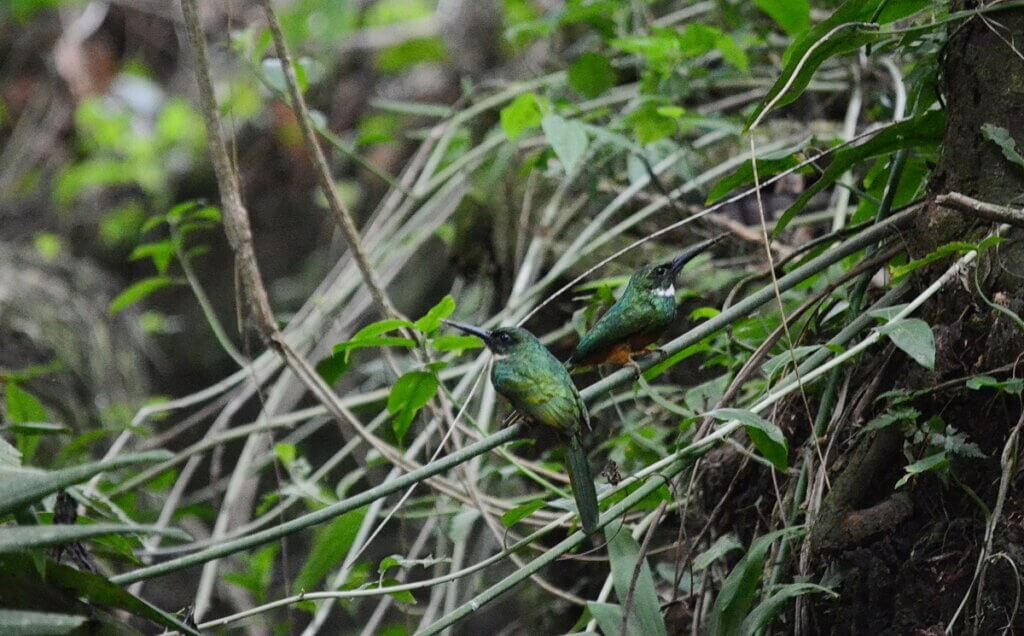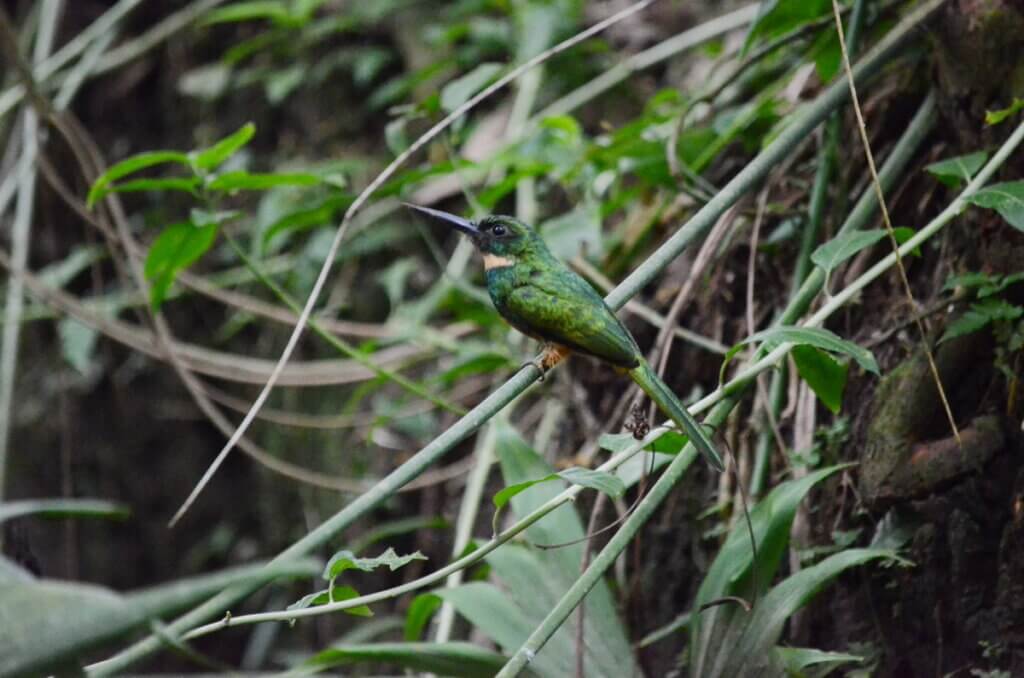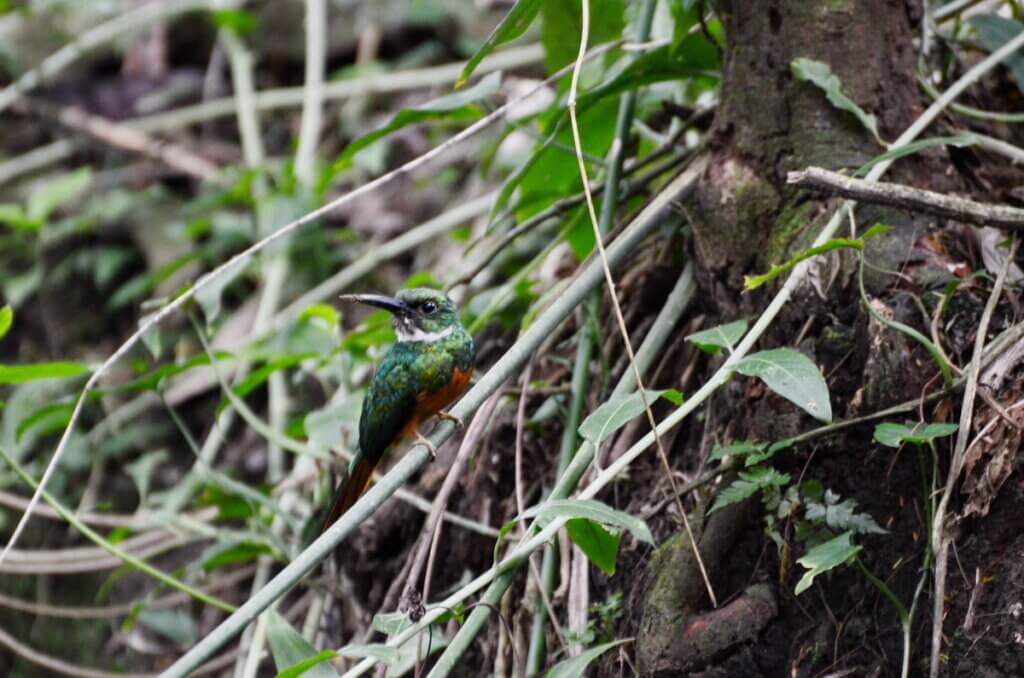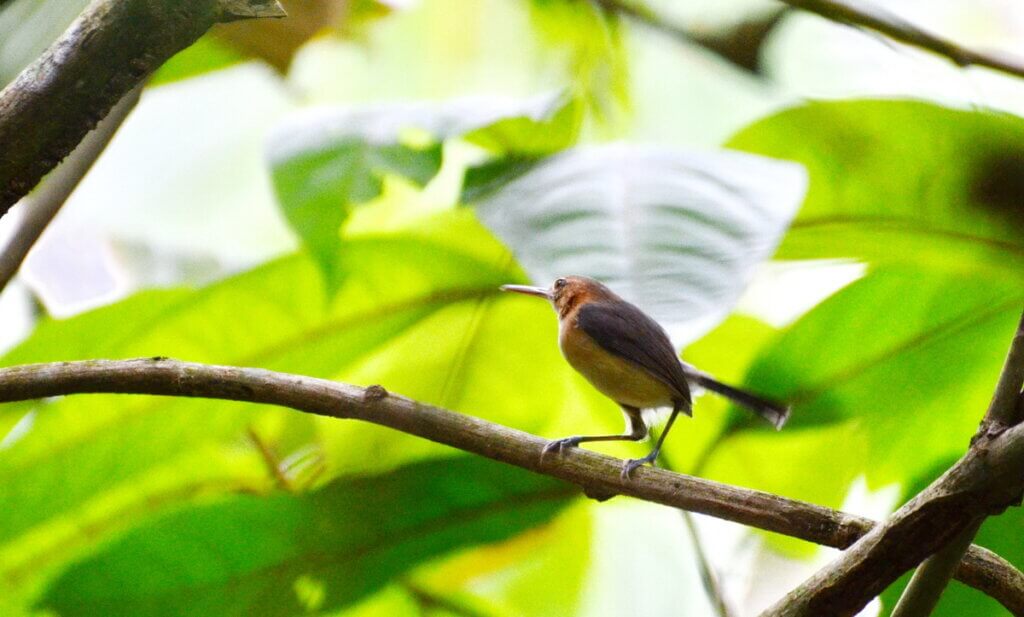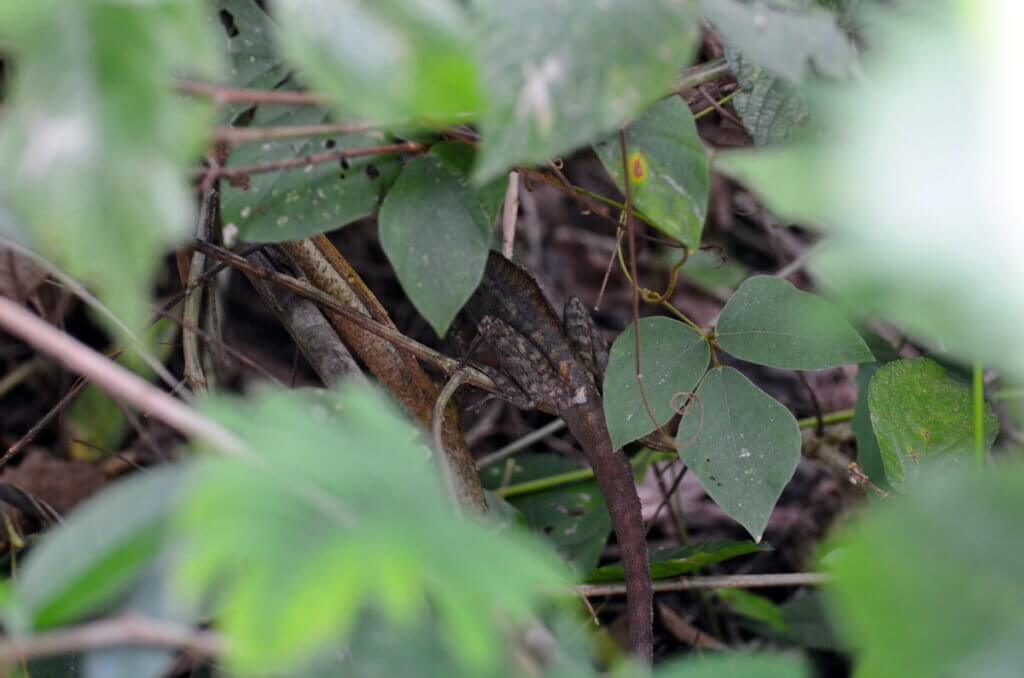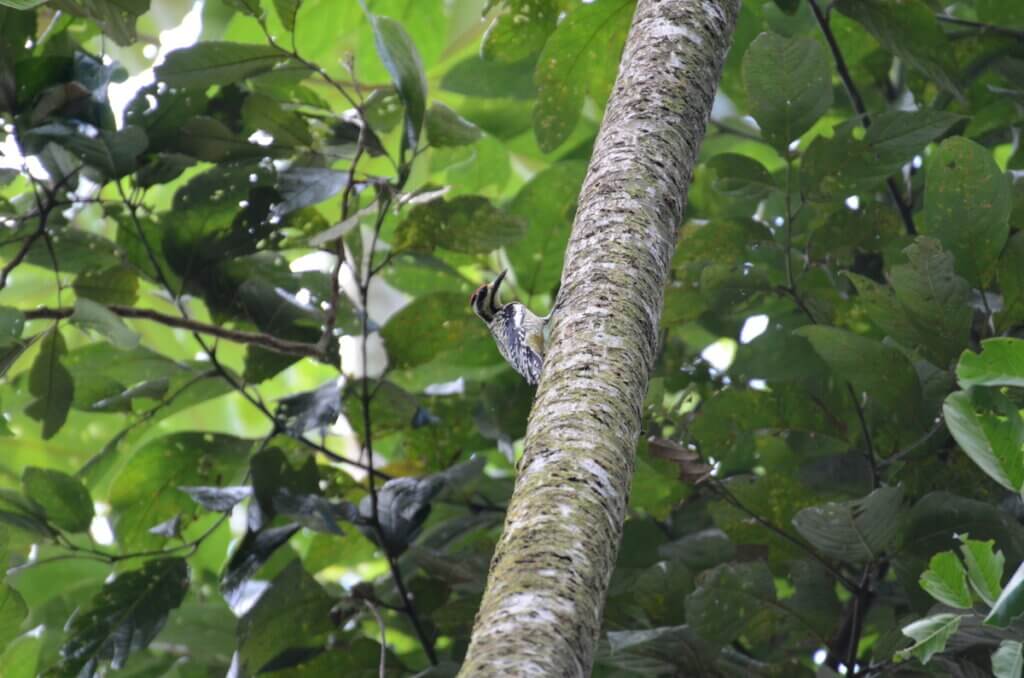Our Sloth Walk At A Sloth’s Pace In La Fortuna
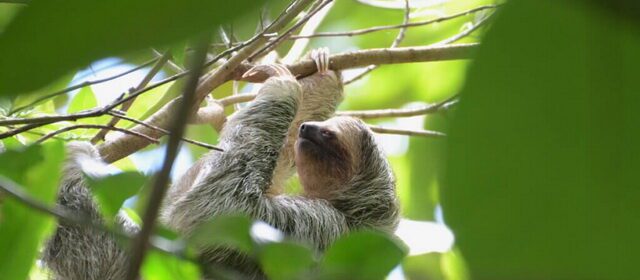
Waking up at 5:45 a.m. was becoming a habit when staying in Costa Rica. The abundant bird calls tugged me from sleep easily as I was always excited for another day of exploration in La Fortuna. Our first view every morning was that of Arenal Volcano seen in the near distance.
Even on the short walk to breakfast, Bob and I admired a variety of tropical vegetation such as the fruits on this Bamboo Palm.
Several minutes were spent observing a Social Flycatcher as it flew back and forth to its nest with building materials.
Then, it was on to The Sloth Walk. Being our first time in Costa Rica, we were giddy at the prospect of seeing new animals, birds and flora.
No time was wasted after a guide, Zorek Ramirez, was assigned to us.
It was into the intriguing shady interior of the small woodlot led by Zorek, otherwise known as Brian. He was very enthusiastic and knowledgeable.
Brian spent many long minutes informing us about the native plants, animals and birds that inhabit and grow in that patch of secondary rainforest. I was particularly interested in this bract supporting several Expanded Lobster claw flowers.
One of the first birds to delight us was a Black-and-white Owl, a species of owl that ranges from central Mexico through Central America to the western region of Colombia.
After marveling at some over-sized fallen leaves, I was encouraged to look deep into the shadows of another furled leaf. Caution was recommended for therein was a poisonous Strawberry Poison-Dart Frog.
Also called Blue Jeans Poison Dart Frog because of its bright blue legs, it is one of 100 species of poison dart frogs.
Their poison results from the types of insects that are ingested.
The reserve covers a 20-hectare area with several trails that crisscross the small patch of rainforest. It was Giovanni Bogarin Solano who, in 2000, decided to preserve and re-naturalize the property so that wildlife around La Fortuna would have a place to go.
Meandering the quiet trails, Bob, Brian and I listened intently for the telltale chirps of birds, a bouncing twig, or the rustle of leaves. A Barred Antshrike blended in well with the shadows owing to the white speckles on its black plumage.
This male Barred Antshrike, showing the white base of his raised crest, had a mouthful of moss destined for the lining of a cup-shaped nest.
Antshrikes do, indeed, eat ants and arthropods.
While on the topic of ants, it was soon after observing this bird that Brian tempted me to try eating some fresh termites plucked straight from a nest. Although preferably eaten in a cooked state, the raw termites tasted rather like pineapple.
A couple of colourful flowers caught my eye. A type of Spiral Ginger and Shell Ginger were striking with their contrasting structures.
The pièce de résistance was the vibrant red bloom of the Perfumed Passionflower.
It wasn’t long before Brian spotted a Three-toed Sloth where it was well camouflaged in a tree.
Only a couple of decades ago, this patch of rainforest was farmland used for pasturing cows. Giovanni worked from the ground up planting native trees and plants that soon attracted the local wildlife. Initially, there was only one resident Sloth.
Now, within this small patch of naturalized rainforest, there are at least a dozen Sloths that make their home. Bob and I were fortunate to see 3 of them.
Damp and muddy sections make up a portion of this woodlot especially during the rainy season. Most trails are smooth and hard-packed with the occasional bridge to span wet areas.
Moist tropical lowland forests, mangrove forests and tropical swamps are the preferred habitat for birds such as this Russet-naped Wood-Rail.
Given the deep shade, it was very difficult to spot this individual as it meandered along a thin stream of water through the undergrowth.
Also taking comfort in the shelter of the low bushes was a pair of Rufous-tailed Jacamars.
Given their remarkable camouflage, at first we only noticed one.
An opportunity arose for us to see the brilliant orange underparts when this male Jacamar moved slightly closer.
Another bird sporting a very long bill and tail was a Long-billed Gnatwren. In actual fact, this Gnatwren is a very small bird.
The interconnecting trails at The Sloth Walk require about 1.5 hours to fully explore. When going at a Sloth’s Pace as we did when plying Brian with questions, it took a full 3 hours.
Brian took delight in testing our skills of observation. Peering into a tangled collection of branches, Brian asked us if we could see anything.
Our untrained eyes required a lot of prompting before we could discern a Common Basilisk.
Bob and I had a good view of the Basilisk’s feet that are equipped with flaps of skin between the toes. These are the characteristic of this species of lizard that allows it to run on water. Hence, its other name Jesus Christ Lizard.
Nearing the end of our tour, Bob and I were unexpectedly reminded of home when a Yellow-bellied Sapsucker appeared on the side of a tree. A fairly common bird at our home in Ontario, Canada, we were able to confirm the id for Brian who was thrilled to see it.
Frame To Frame – Bob and Jean

